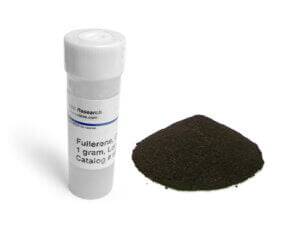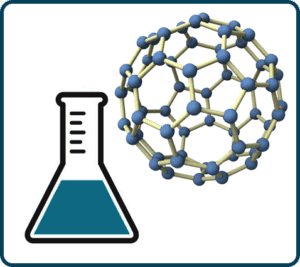We often get a lot of questions about graphene and graphene oxide, specifically how it relates to our C60 products. This is because both graphene and C60 are based on carbon molecules. However, there are some significant differences between these two molecules. Below, we’ll go into more detail about graphene and graphene oxide, including how it’s different from C60.We often get a lot of questions about graphene, specifically how it relates to our C60 products. This is because both graphene and C60 are based on carbon molecules. However, there are some significant differences between these two molecules. Below, we’ll go into more detail about graphene, including how it’s different from C60.
What is Graphene?
Graphene is one of the thinnest materials known to man. The best way to picture graphene is by first talking about graphite. When you examine graphite, the molecules look like a latticework, all stacked upon one another. Graphene is just one monomolecular level of graphite, making it incredibly small. If graphite is a stack of paper, then graphene is just one page within that stack.
The reason that people study a single layer of graphite is that graphene has some remarkable properties. For example, even though it’s only one atom thick, it’s 200 times stronger than steel. In addition, graphene is an excellent conductor of both heat and electricity. The result is that you could potentially use graphene in numerous applications, such as the production of batteries, computer chips, antennas, and solar cells.
How is Graphene Made?
A complicated process is used to manufacture graphene. It starts with a sheet of copper foil placed in a furnace with argon gas. The purpose of this is to drive away any of the oxygen molecules in the air. From there, the carbon atoms get deposited on a matrix and covered with a plastic coating. It’s then spun rapidly and broken apart into its separate chemicals. All copper and foreign materials are driven off at the end of this process, leaving you with just raw graphene. All of this is happening on such a microscopic level that you can’t even see it with the naked eye.
How is Graphene Different from C60?
Graphene and C60 are both carbon molecules. However, this is essentially where their similarities end. Going back to our previous example, if graphite is a stack of paper and graphene is a single piece of paper, C60 is more of a soccer ball. It’s a three-dimensional structure where graphene is only two-dimensional. This means that chemically speaking, these two molecules are very different.
As a result, these two molecules have different applications as well. For example, C60 has been used for various medicinal purposes, such as treating acne or signs of aging. While there are some similarities between the properties of both graphene and C60, such as their strength, they have enough differences to make them better at performing different functions.
What is Graphene Oxide?
When researching graphene and C60, you may have come across the term graphene oxide. Graphene oxide is similar to graphene but with one key difference – the ability to dissolve in water.
One of the similarities between graphene and C60 is that they are both water-insoluble. This means that if you try to mix them with water, they do not dissolve and instead float to the top. For this reason, we integrate our C60 with oil instead so that it can more easily be consumed for adsorption purposes.
If you want to make graphene water-soluble, you need to put the graphene through an oxidation process. Going through this process turns graphene into graphene oxide, which is capable of dissolving in water. Dissolving in water is not possible with pristine C60 due to the different natures of their structure. As we said earlier, C60 molecules are in the shape of a soccer ball, meaning no open connections on the ends. This is different than graphene, which has open connections on the edges. In the oxidation process, oxygen molecules attach to the carbon molecules around the outside and throughout, altering their molecular structure.
Understanding the Differences Between Graphene and C60
As you can see, there are some significant differences between graphene and C60, including its molecular structure and its uses. This is even though both molecules are essentially made up of the same thing – carbon. By knowing the differences between these two molecules, you can make more informed purchasing decisions when getting graphene and C60 products.
We hope this guide cleared up some of your questions about graphene and how it relates to C60. If you have any additional questions about graphene or our C60 products, please feel free to contact us at any time. We’d be happy to discuss with you in more detail how these molecules differ so that you can feel more comfortable with our C60 products.
How is C60 different from Graphene Oxide? | SES Research – Houston, TX



